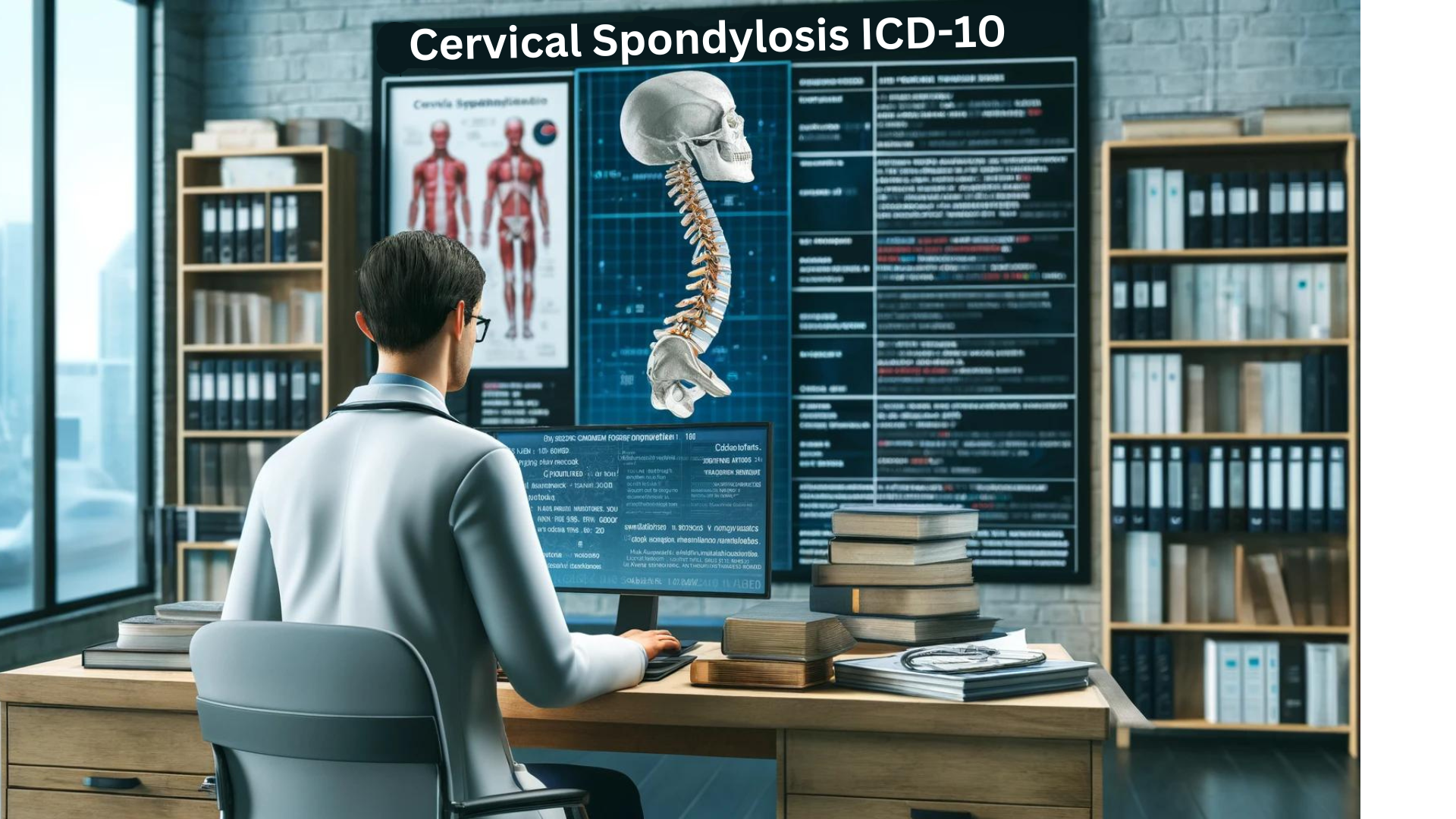Subtotal $0.00
American Medical Association designates M47.812 as Cervical Spondylosis ICD 10 code. This is a common code that is updated on 1st October 2023. AMA updates the code every year to ensure a smooth and updated process.
ICD-10 Code for Cervical Spondylosis – M47.812 Diagnosis Code
The ICD-10 code for Spondylosis without myelopathy or radiculopathy is M47.812 in the cervical region. Here’s a breakdown of what this code signifies:
- M47: This pertains to diseases of the musculoskeletal system and connective tissue, specifically spine disorders.
- .8: The decimal point followed by a number further refines the category, indicating spondylosis.
- 12: This final part of the code specifies the type of spondylosis: without myelopathy or radiculopathy, and in the cervical region (neck).
Code M47.892: Other spondylosis, cervical region:
This is the most general ICD-10 Code for cervical spondylosis. It is used when the specific type of the disease is not identified.
ICD-10 Code for Cervical Spondylosis with Myelopathy
The ICD-10 code for myelopathy in the cervical region is M47.12: This code is used when the involvement of the spinal cord causes symptoms like weakness, numbness, or difficulty walking.
ICD-10 Code for Cervical Spondylosis with Radiculopathy
M47.22 is a common ICD-10 code for spondylosis with radiculopathy in the cervical region: This code might be used in some cases for cervical spondylosis with radiculopathy. However, M47.892 might be preferred as it’s a broader radiculopathy category.
ICD-10 Code for Cervical Spondylosis with Foraminal Stenosis
M99.71 is the ICD Code for connective tissue and disc stenosis of intervertebral foramina of the cervical region. This is the specific code for stenosis (narrowing) of the foramen (opening between vertebrae where nerve roots exit) due to connective tissue and disc degeneration in the cervical spine. This code directly captures both spondylosis and foraminal stenosis.
ICD-10 code for Cervical Spondylosis Unspecified
The ICD-10 Code for unspecified cervical spondylosis is M47.92: This code is used if the location of the spondylosis is not specified and affects both cervical and lumbar regions or if the specific type is not determined.
Understanding Cervical Spondylosis
Cervical spondylosis is one of the degenerative disorders. It is commonly age-related and affects the cervical region of the body. The disease is also known as cervical osteoarthritis or neck arthritis and causes wear and tear. It changes the shape of the discs, joints, spine, and neck. The common ICD-10-CM code for this disease is M47.812. It is a painful and torturous disease. The disease worsens with age. Research shows that about 85% of people above 60 years are affected by the disease.
Causes of Cervical Spondylosis
Cervical Spondylosis is commonly related to age and wear and tear. However, some other factors also cause a person to get cervical spondylosis. The causes include:
- Dehydrated Discs
- Genetics
- Injuries
- Disc Cracking
- Stiff Ligaments
Symptoms of Cervical Spondylosis
Symptoms of cervical spondylosis. Cervical spondylosis remains asymptomatic. Even when symptoms appear, there is only stiffness and pain in the neck. Some common symptoms include:
- Pain radiating to arms or shoulders
- Muscle spasms
- Headaches
- Reduced motion
- Grinding sensation
- Numbness
- Tingling
- Weakness in Arms region
- Muscle Spasms
- Cervical Radiculopathy
- Loss of Balance or Coordination
Diagnosis of cervical spondylosis
The diagnosis of cervical spondylosis includes a combination of medical reviews including;
- Medical History Review
- Physical Examination
- Imaging Studies (X-rays, CT scans, MRI scans)
- Electromyography (EMG)
- Nerve Conduction Studies
- Diagnostic Tests (Blood tests)
Treatment of cervical spondylosis
The prognosis of cervical spondylosis varies depending on the severity of symptoms. Cervical spondylosis tends to worsen over time, especially without appropriate management. However, these are the following treatments for cervical spondylosis:
- Symptom Management
- Disease Progression
- Complications
- Treatment Response
- Long-Term Outlook
Managing cervical spondylosis
Here are some ways to manage cervical spondylosis;
- Pain Relievers ( ibuprofen, acetaminophen)
- Ice or Heat Therapy
- Physical Therapy
- Manual Therapy
- Cervical Traction
- Pain Management
- Activity Modification
- Posture Correction
- Lifestyle Changes
- Neck Supports
- Surgical Intervention
Lifestyle Changes for Cervical Spondylosis
A few lifestyle changes can do wonders, including;
- Maintaining good posture
- Ergonomics
- Regular exercise
- Stress management
- Maintaining a healthy weight
Conclusion
ICD-10 codes lead to better care for patients. Spondylosis is a critical health condition. Accurate coding empowers healthcare teams to diagnose conditions swiftly. This coding enables healthcare professionals to understand the clinical significance and tailor treatment plans effectively. This precise communication fosters better patient outcomes. It ensures targeted interventions and monitoring of the efficacy of treatment strategies.






